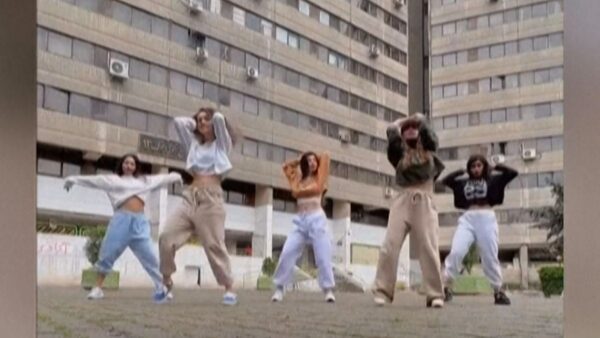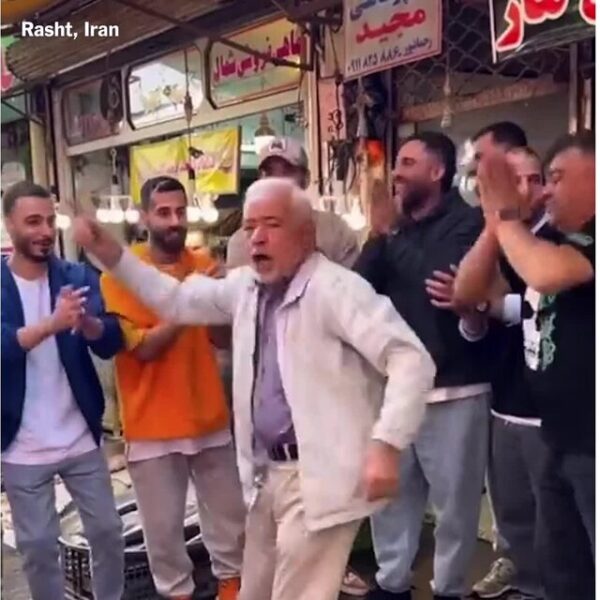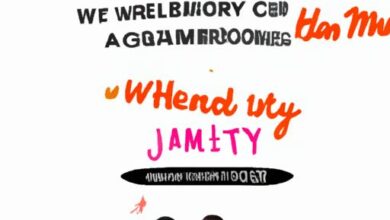The Power Of A Viral Dance In Iran: A Symbol Of Rebellion And Protest

Discover the captivating story behind the viral dance in iran video that took the internet by storm. In this article, we delve into the extraordinary journey of Sadegh Bana Motejaded, a 70-year-old market stall owner in Rasht, Iran, who became an unplanned symbol of resistance through his dance. This video, initially shared millions of times across various platforms, sparked both fears and solidarity among Iranians. The government’s harsh response, censoring Motejaded’s Instagram account and the subsequent arrests, triggered an unexpected backlash and criticism from conservative allies. Join us to explore the profound cultural and political implications that transformed Motejaded’s dance into a powerful form of protest against the regime’s restrictions. While celebrating the spirit of freedom and happiness, this article aims to provide insights into the popular viral dance in Iran video phenomenon.

| Key Takeaways |
|---|
| Discover how a simple dance video in Iran went viral and became a symbol of resistance. |
| Learn about the government’s response and the unintended backlash it sparked. |
| Explore how participating in the dance trend has become a form of protest for Iranians. |
| Understand the cultural and political implications of the viral dance in Iran. |
I. The Power of a Viral Dance in Iran
The story of Sadegh Bana Motejaded, a 70-year-old market stall owner from Rasht, Iran, demonstrates the immense power and impact that a simple dance video can have. Initially captured dancing and singing a folk song in his white suit at a market, Motejaded’s video quickly went viral and took the internet by storm. Shared millions of times across various platforms, it became an unexpected symbol of resistance against the regime in Iran.
| Key Points: |
|---|
| A 70-year-old market stall owner named Sadegh Bana Motejaded became the focus of attention due to his viral dance video. |
| Motejaded’s video was shared millions of times on various platforms. |
This powerful display attracted international attention and triggered fears among Iranian authorities about potential protests against the regime. As a response to what they believed were violations of Islamic rules that forbid public dancing, Iranian officials shut down Motejaded’s Instagram account and arrested several men featured in the video. These individuals reportedly faced mistreatment during their arrest and were warned against future public performances.
“A 70-year-old Iranian market stall owner, Sadegh Bana Motejaded, became an unexpected symbolof resistance after his dance at a market in Rasht…”
However, this harsh response from the government inadvertently sparked an unintended reaction. Iranians began posting videos mimicking Motejaded’s dance as an act of solidarity with him. Even conservative allies criticized the government’s actions as excessive. This unexpected backlash against the government’s response ultimately led to the reinstatement of Motejaded’s Instagram account, solidifying his status as a symbol of subtle rebellion against the regime’s strict restrictions.
- Inspired by Motejaded, Iranians posted videos mimicking his dance as an act of solidarity.
- The government faced criticism, even from conservative allies, for their excessive actions in response to the viral dance video.
The viral nature of this dance video highlighted the growing demand for freedom and happiness among Iranians. DJ Mohammad Aghapour, who remixed Motejaded’s dance video with contemporary beats, noted that participating in this dance trend has become a form of protest. It allows Iranians to express their desire for personal liberties and challenge the oppressive restrictions imposed by the regime.
| Key Takeaways: |
|---|
| The harsh response from Iranian authorities triggered an unintended backlash and criticism. |
| DJ Mohammad Aghapour emphasizedthat participating in this viral dance trend is more than just entertainment;it serves as a symbolic demand for freedom and happiness. |

II. The Backlash and Criticism
The government’s response to the viral dance video in Iran triggered an unexpected backlash and drew criticism from various quarters, including conservative allies. Many Iranians saw the authorities’ actions as an infringement upon their freedom of expression and a heavy-handed approach to handling cultural and artistic expressions.
| Key Points: |
|---|
| The government’s response was seen as an infringement on freedom of expression. |
| Conservative allies joined in expressing criticism towards the authorities. |
| Iranians saw the government’s actions as a heavy-handed approach. |
This incident highlighted a growing divide between sections of society in Iran. While some conservative factions supported the authorities’ actions and criticized the dance video as a violation of Islamic rules, others, including those who would typically align with conservative values, expressed solidarity with Sadegh Bana Motejaded and condemned the government’s overreach.
III. The Symbolic Rebellion
The Dance as a Subtle Act of Defiance
The viral dance performed by Sadegh Bana Motejaded served as more than just a form of entertainment; it became a symbolic act of rebellion against the strict regime in Iran. By publicly dancing despite Islamic rules forbidding such acts, Motejaded challenged the authority and showcased his resistance. His fearless expression of joy and defiance resonated with Iranians who yearned for the freedom to express themselves and pushed back against the oppressive restrictions imposed upon them.
A Cultural Movement and Unit 2
What started as an individual’s dance quickly turned into a nationwide cultural movement. Iranians from all walks of life, regardless of their political affiliations, joined in and started posting videos of themselves mimicking Motejaded’s dance in solidarity. This collective response demonstrated the power of unity, transcending political differences and showcasing a shared desire for freedom and self-expression. The viral dance phenomenon served as a unifying force, creating a sense of solidarity among Iranians against the government’s actions and inspiring others to stand up against oppression.
An Expression of Frustration and Hope
The dance trend that emerged as a result of Motejaded’s viral video is not just about rebellion; it is also an expression of frustration and hope. Iranians, tired of living under strict control and limited freedoms, found solace and a sense of empowerment in participating in the dance. As they danced, they expressed a shared frustration with the oppressive regime while also clinging onto the hope for a better future. It became a powerful way for individuals to voice their discontent and assert their right to happiness and freedom, even in the face of adversity.

IV. Participating in the Dance Trend as a Form of Protest
The Power of Collective Dance
The viral dance in Iran video sparked a collective movement across the country, with people from various backgrounds joining in to show their solidarity and defiance against the restrictive regime. By participating in the dance trend, Iranians are not only expressing their love for music and dance, but also using it as a powerful tool to challenge authority and demand their rights to freedom and happiness. The act of dancing together in public spaces becomes a way to reclaim their individuality and break free from the constraints imposed by the government.
Overcoming Fear and Standing United
Participating in the dance trend as a form of protest requires immense courage and the willingness to face potential consequences. Despite the government’s attempts to suppress the movement, Iranians are displaying remarkable resilience and unity. By coming together and sharing their dance videos on social media platforms, they are creating a sense of community and defiance against the regime’s oppressive measures. This collective action also serves as a powerful reminder to the government that attempts to suppress individual freedoms can backfire and ignite a stronger determination among the people.

V. Conclusion
The viral dance video featuring Sadegh Bana Motejaded in Iran has highlighted the power of social media in expressing resistance and dissent. What started as an innocent video turned into a symbol of rebellion against the strict regime restrictions on public dancing. The harsh response by Iranian authorities backfired, as it sparked a wave of solidarity and criticism, even from conservative allies. Participants in the dance trend have transformed it into an act of protest, demanding freedom and happiness. This incident sheds light on the importance of cultural expression and the role it plays in challenging authoritarian regimes. The viral dance video serves as a reminder that even seemingly small acts can have significant cultural and political implications.







